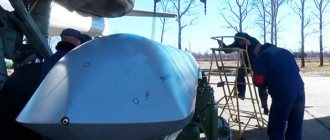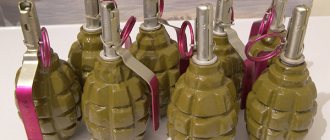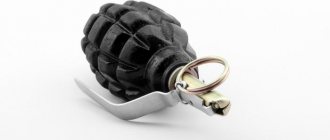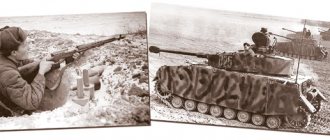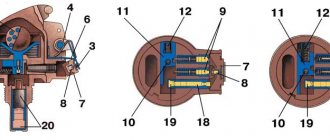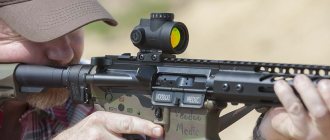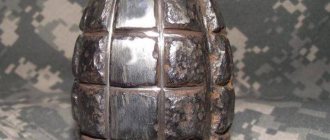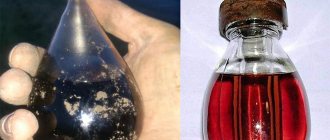F-1 fragmentation grenade Limonka
The F-1 hand-held anti-personnel defensive has been in our country’s army service for almost a century. The ammunition combines efficiency and ease of operation, which allowed it to exist for a long time without fundamental changes. Only the fuse design was modified. F-1 is colloquially called “fenyusha”.
The grenade is designed to defeat manpower in defensive combat. Due to the significant radius of scattering of fragments, it can only be thrown from behind cover, from an armored personnel carrier or from a tank.
A little history
During World War I, Russian soldiers used grenades supplied to Russia by Western allies. These were F-1 fragmentation grenades, invented in 1915 by the French, and English-made Lemon grenades. This is where the F-1 designation and the name “limonka” originate. Although some argue that this name is due to the similarity of the pomegranate in shape to the lemon fruit.
When did lemon grenades appear? Taking the French model as a basis, engineer Koveshnikov created a new fuse. “Limonka” was put into service in November 1928 with a remote-controlled fuse, which was invented by Koveshnikov in 1927. A grenade can reach a given target only as a result of a throw by a warrior’s hand. And the fact that it has a remote effect means that the explosion will occur 3.2–4.2 seconds after the throw, regardless of any circumstances. Its modernization was carried out in 1939 by engineer V.I. Khrameev. He removed the lower window from the body and replaced the plain cast iron with steel. And in 1941, Koveshnikov’s fuse was replaced with a standard unified UZRG, invented by E.M. Viceni, which was easier to use and manufacture.
After World War II, the fuse was once again modernized, as a result of which the reliability of operation increased, and it began to be designated UZRGM. And the soldiers nicknamed the grenade “fenusha.”
Grenades of this and that system
Despite the appearance in the second half of the 20th century of numerous grenade launchers, both under-barrel and more powerful portable ones such as RPG-7 or RPG-18, ordinary hand grenades still occupy an important place in a soldier’s combat equipment. Their role is especially high in urban battles. Since the Battle of Stalingrad, there has been a saying among the fighters of the assault groups: “Go into the room together: first the grenade, then you.” Which hand grenades can now be found in the arsenal of a Russian soldier?
Not old, but classic
The most famous hand grenade in the former USSR is the F-1 - “efka”, also known as “limonka”. The oldest grenade in service is classified as defensive - that is, its use is allowed only when throwing from cover, since the scattering of fragments is greater than the throwing range.
The hand grenades produced three quarters of a century ago will last for a long time.
The Soviet F-1 grenade was created on the basis of the French F-1 grenade of the First World War. Thanks to the ribbed corrugation, the lemon has a very characteristic and easily recognizable appearance. It is generally accepted that this notch divides the grenade body into ready-made destructive elements, but in fact this is not so - steel cast iron is crushed into fragments during an explosion, regardless of the shape of the body. The number of fragments in the “limon” depends mainly on maintaining the technological parameters when casting the body. If they are not followed, over-fragmentation is possible, in which a significant part of the mass of the hull literally turns into dust during an explosion - tiny fragments that are not capable of causing serious injuries even to a nearby enemy. The other extreme would be to obtain single large fragments that retain destructive power over a considerable distance - up to splitting the body in half. In most sources, the damage radius for this grenade is indicated as “up to 200 meters”, although this looks like a clear reinsurance.
However, in the absence of more modern grenades, the lemon grenade is valued by soldiers and is successfully used.
The RG-42, known as "condensed milk", was developed and put into service during the Great Patriotic War. Like the F-1, it received its nickname for its characteristic appearance - in fact, the grenade body was an ordinary tin can, into which a notched steel strip was placed to increase the fragmentation effect. The mass of the explosive was 110–120 grams, its composition was “what was found,” from TNT to pyroxylin. Although “condensed milk” was a typical wartime ersatz product, it was produced until the mid-50s, and RG-42s are still in warehouses. However, they are not only stored in warehouses - “ergashkas” were used both in Afghanistan and in Chechnya: thanks to their flat base, they were convenient to install as tripwire mines.
The production of the RG-42 in the 50s was replaced by the new RGD-5. The main difference was the shape of the grenade - it became oval, resembling an egg. The grenade body was assembled from two stamped steel halves.
The basis for all the Soviet grenades mentioned above was the UZRG fuse and its modifications UZRGM and UZRGM-2. Developed in 1941 to replace the Koveshnikov fuse, it is a metal case, inside which there is an igniter primer, a moderator (powder pulp, later replaced with a special composition), a detonator cap, a firing pin with a mainspring and a safety clip with a pin. The principle of its operation is similar to that of a firearm. After the safety pin is pulled out and the lever is released, the firing pin is activated under the action of the spring, breaking the igniter primer. In three to four seconds, the moderator burns out, and then the detonator cap explodes, initiating the main explosive charge of the grenade. When installing a grenade as a tension mine, military “craftsmen” sometimes dismantled the fuse, removing the moderator. True, judging by numerous reports from the troops, the “innovators” were not always lucky, about which there was even a dark joke: “UZRG doesn’t understand. More precisely, it is sorted out, but not more than once. Using stumps a second time is not convenient.”
Order from the commander of the 90th Rifle Corps to the commander of the 182nd Rifle Division on the organization of training sessions on handling captured grenades.
It is curious that the Germans used an even more primitive grating fuse for their grenades. But the “advanced” ones were the Hungarian and Italian grenades, which had impact fuses that were triggered by an impact. Or not working. After this, the troops wrote reports in the style of “according to reports coming from units, of the Italian grenades in service, 90% of them do not explode.”
. The main reasons were insufficient impact force - for example, when hitting snow or tall grass. In the case of using captured grenades, poor knowledge of the characteristics of the “enemy equipment” was added. In any case, the opinion of war veterans about impact fuses ended up being rather negative - complex and unreliable.
New Generation
Perhaps this is precisely the reason that the Soviet army received grenades of a new type only in the 80s of the last century. The new hand grenades, defensive RGO and offensive RGN, have a similar design to each other.
Stack of RGN hand grenades in a box. On the left are grenades, on the right are fuses.
The main “highlight” was the new impact-remote fuse of the ultrasonic fire protection device, which has two independent triggering circuits. One resembles a classic UZRG - however, in this case this circuit is auxiliary, ensuring the detonation of a grenade in the event that the main impact fuse does not work.
Two more tubes also contain a retarding compound, but their function is to delay cocking. Only after the two backup moderators have burned out is the mechanical inertial fuse released. Thus, in the event of an unsuccessful throw or simply a dropped grenade, the unlucky thrower has a chance to throw it away or get away himself - the latter is more difficult, but sometimes adrenaline does not work such miracles.
Hexogen with the addition of TNT was chosen as the explosive for the new grenades. The need for the additive is due to the fact that crystalline RDX does not melt in its pure form, and the addition of TNT allows it to be poured into the grenade body. However, the design allows, if necessary, the use of pressed bombs with explosives for equipment. According to some reports, A-IX-1 explosive (96% hexogen, 4% wax) is also used for grenades.
The main types of hand grenades in service with the Russian army.
The body of the offensive grenade, which has a notch, is made of thick aluminum alloy. The choice of material is determined by the purpose of the grenade - lighter aluminum fragments lose speed faster and are less dangerous for the grenade launcher. The defensive grenade received a two-layer body made of thick sheet steel. This time, the outer side in the lower hemisphere is also corrugated - this allows you to determine the type of grenade by touch. Like the old “lemon”, this grenade, according to instructions, should only be thrown from behind cover.
According to the recollections of the soldiers, the grenades of the first releases had too short a delay in arming the impact fuse, which in the hot season was reduced to half a second. This led to the fact that in the green area the grenade could explode upon impact with branches close to the thrower. Later releases addressed this issue by increasing the latency to 1–1.8 seconds.
This is what the RGO grenade will look like in the new command-tactical game “Caliber”, which 1C Game Studios is developing together with Wargaming Alliance
The main problem of RGO and RGN was and remains their higher complexity and cost compared to older types of grenades. Taking into account the reserves produced in Soviet times “until the end of the Third World War,” you can be sure that “lemon” with “ergedeshki” will be in use for a long time both in the vastness of the former USSR and beyond its borders.
Specifications
The grenade has the following tactical and technical data:
- weight of the lemon grenade – 600 g;
- explosive mass – 60 g;
- throw range – 50-60 m;
- radius of action (by fragments) – 30-40 m;
- shock wave length – 0.5 m;
- safe distance – 200 m;
- the time after which the explosion will occur is 2.7-4.2 seconds;
- the number of fragments capable of hitting a target is up to 300 pieces.
The design of the grenade turned out to be very successful, which is why it is used by the armies of many countries. Only the fuse underwent changes several times in order to improve reliability, duration of storage and operation.
German hand grenade M-39 model 1939 (die eihandgranate).
High-explosive long-range offensive grenade. Used by the Germans on all fronts. Colloquially referred to as “egg” due to its external resemblance. Grenade weight - about 200 g; bursting charge weight - 110 g; burning time of the remote composition - 4-4.5 seconds; the destructive radius of fragments is about 10-15 m; dangerous at a distance of up to 100 m; height with fuse -110 mm; case diameter - 56-57 mm.
The grenade consists of an ovoid body with an explosive charge, an ignition mechanism and a detonator cap No. 8. The ignition mechanism of a grenade is of a grating type. It consists of a safety cap with a double cord about 6 cm long, an aluminum bushing with a grating fuse, on which a square washer is tightly screwed on one side, and on the other side a tube with spacer compound is screwed in, onto which KD No. 8 is put on. In the stowed position, fuses (ignition tubes) are stored separately from grenades. A safety cap-thimble is screwed onto their threaded fuse, which protects the remote compound from moisture. The cap is made of plastic of different colors or brass. There are grenades with a ring for hanging on a belt, located on the side opposite the fuse (on the top of the head). On the Volkhov Front, an M-39 grenade was found with a device for shooting a grenade from a signal pistol (rocket launcher). The device is a tube made of pressed cardboard (or bakelite) into which a duralumin sleeve with a primer, an expelling powder charge and a percussion mechanism is screwed from below. Inside the bakelite tube is an aluminum tube with a diameter of 8 mm with a capsule. A carbolite coupling with a steel spacer tube pressed into it is screwed onto the upper end for screwing into the M-39 body. A detonator cap No. 8 was put on the nipple of the remote tube. To fire a rocket launcher, a special elongated cartridge case with a large hole in the bottom was inserted.
Structure of a grenade
The lemon grenade, like most anti-personnel grenades, contains three main parts:
- Frame. It has an oval shape with a ribbed surface made of thick cast iron. When ruptured, the rib layer scatters into fragments of a certain mass and size, which have an initial speed of 730 m/sec. Total weight 600 g.
- Substance for explosion. TNT with a mass of 60 g is used. Trinitrophenol is sometimes used. In this case, the ability to destroy increases, but the shelf life in warehouses decreases; if the period expires, an explosion may occur. The explosive is separated from the metal casing by paper, varnish or paraffin.
- Fuse. His UZRGM brand has a universal structure and is suitable for other types of grenades. The fuse hole is covered with a plastic plug during weapon storage.
GG/P-40 cumulative rifle grenade (gewehrgranate)
Transport closure 496 x 356 x 198 mm. There are 25 pieces in a box. disassembled grenades - fuses separately. Fuse AZ-2482 (Aufschlagzunder - impact fuse). Cartridge G caliber 7.92 mm with a wooden bullet (weight 15 g), gunpowder 3.6 g NRP 1x1/0.1. A shaped charge of a whitish-blue color weighing 100 g (possibly phlegmatized hexogen). It was fired using a special mortar-grenade launcher. A distinctive feature of a spent grenade is a deformed body; there is no rubber cover behind the stabilizer. You cannot turn the head part away from the stabilizer.
Explanation of title terms
Let us consider in detail what terms the concept of “limonka hand-held fragmentation anti-personnel defensive grenade” includes:
- manual – delivered to the destination as a result of a hand throw;
- fragmentation - the goal is achieved as a result of the grenade body breaking into fragments;
- anti-personnel - used to defeat enemy forces;
- defensive - fragments scatter to a width exceeding the throwing range, so it can be used for any kind of cover.
Storage
Lemonka grenades contain twenty pieces in wooden boxes, the weight of which is 20 kg. Fuses in two impenetrable metal cans, ten pieces each, are placed in the same box and equipped with a can opener in order to open the containers with the fuse. Lemon grenades are supplied with fuses right before they are used. After the end of the battle, the fuse is removed from the device and kept separately. The purpose of packaging fuses in impenetrable containers is to ensure maximum safety throughout the entire shelf life and prevent corrosion and oxidation of the components of the explosive mixture.
Often the lemon grenade, the radius of destruction of which by fragments is quite large, is used when installing trip wires. It can remain for a long time under unfavorable conditions until the trap is triggered, and has a high damaging factor.
Grenade coloring
The color of the combat grenade is green, ranging from khaki to dark green. The training "fenyusha", unlike the combat one, is black and has two white stripes, one of which is located vertically and the other horizontally.
There is a hole at the bottom of the imitation lemon grenade. The pin ring and part of the pressure lever below are scarlet. But the fuse itself is not painted.
F-1 during the Great Patriotic War
During these years, the production of the F-1 grenade increased significantly. It was produced not only at specialized military factories, but even former enterprises for the production of canned food were used for this purpose. Its phenomenal nature lies in the fact that the body was an ordinary tin can with modified dimensions. Instead of canned food, a thick steel strip with notches and a charge were placed in it. And the substance for the explosion could be gunpowder, which was used for hunters' rifles, but this had practically no effect on the fighting qualities.
According to statistics, approximately two and a half million lemons were used in the battles near Stalingrad, and at Kursk their number exceeded 4,000,000, and during the battle for Berlin - about 3,000,000. Soldiers used "fenyusha" both in defense and and in offensive operations due to its combat qualities and light weight. How much does a lemon grenade weigh? It turns out that it was only a little more than half a kilogram, so it was taken into battle by infantrymen, tank crews and artillery soldiers. Even the pilots took “efki” with them in case of an emergency landing of the plane on enemy territory. The F-1 grenade was called a weapon of victory, along with Il-2 aircraft, T-34 tanks and Katyusha rocket launchers.
RGD-33 hand grenade, Dyakonov system, model 1933.
They have been used on all fronts and are found everywhere. When using a defensive cover (shirt) the grenade is defensive, without a shirt it is offensive. They were produced by various factories, workshops, etc. These specimens could have deviations in shape and size. During the defense of Sevastopol, grenades were produced in the city, on top of which instead of a tape with fragmentation threads, steel wire was wound over the charge.
Weight without shirt - 500 g; with a shirt - 750 g; charge - 125 g; Moderator burning time is 3.5-4.5 seconds. Dangerous distance: with a protective cover - 100 m; without a defensive cover - 25 m. They were equipped with cast and pressed TNT, during the Second World War they were equipped with various surrogates. If the handle is pulled back, the grenade is cocked.
RGD-33 is perhaps the most common Soviet grenade during the war. Many search engines have had to deal with it in their work. RGD-33 can be found in the most unexpected places. Half-rotten, with fallen off handles and decomposed TNT along with the remains of soldiers, laid out in a row, platooned on the parapets of trenches, already abandoned, but for some reason not exploded, defended in battle and stored in dugouts. The abundance of these fans often dulls vigilance, and RGD-33 is dangerous, like any other explosive object.
"Limonka" in the Afghan war
The F-1 grenade also contributed to military operations in Afghanistan. In the mountains, during close combat, she was the most effective. Among the stones that served as cover, it was used in direct combat with the enemy. In open areas, using a grenade is dangerous due to the large scatter of fragments, and when the spooks are on the slope of a mountain, using lemons is much more convenient than artillery or mortars. Combat in the mountains was based on the rule “whoever is higher is stronger.” Even with the actions of one unit below, those located on the ridge helped him from above. In some cases, due to the flight range, the fuse pin was tied to the body of the grenade so that it would not explode in the air before reaching its destination.
Quite often we used the lemon grenade (photo above) on mountain trails to install tripwires. The explosion was so strong that all the grass within a radius of 5-6 meters disappeared from the surface of the earth, and, of course, there was no chance for those who fell to survive. In Afghanistan, the military called “Limonka” “lovebird.” She was always left just in case (captivity or encirclement). Using F-1, you can lift yourself into the air, so as not to be captured, and everyone who is nearby. During the withdrawal of troops from Afghanistan, sometimes, before reaching the border, they were allowed to blow up “fenushas” in a ravine, and take the ring from the fuse as a souvenir.
Anti-tank hand grenade RPG-43 model 1943
It appeared on the fronts in mid-1943. It was intended exclusively for combating armored targets - it destroys armor up to 75 mm, thanks to its cumulative high-explosive action. Explodes instantly upon contact with an obstacle. Throwing is carried out only from a trench, in order to avoid hitting the thrower. You need to throw a grenade so that it hits the armor with its bottom. This is facilitated by its balancing and flight stabilizer, consisting of two fabric tapes and a cap, which act as a parachute during the flight of the grenade. The weight of the grenade is 1200 g.
Externally, the grenade looks like this: a cylindrical body turning into a cone. Below its truncated part is a wooden handle; in its upper part there is a cotter pin that holds the lever. Trying to unscrew the handle to remove the fuse is unacceptable.
The RPG-43 is extremely dangerous. Particular attention to specimens with a rotten handle and a fallen off stabilizer cap.
How to make a lemon grenade in the classic way
For manufacturing you will need the following materials:
- any peas;
- firecracker bought in a store;
- office glue;
- different A4 paper;
- glue "Moment";
- bobbin threads;
- household matches;
- plastic bottle;
- empty matchbox;
- any paint.
To make an igniter you need:
- Cut a strip 70 mm long and 8 mm wide from a plastic bottle. Make a hole at one end and attach a key ring to it. This will be a check.
- Glue a grater from a matchbox for ignition to the opposite side of the ring.
- Take a firecracker and tape a match around it so that there is a match head near the ignition point.
- Attach the made pin with an elastic band to the firecracker.
- To make the body, you will need a cylinder made of cardboard (you can take it from toilet paper). Close one edge with a circle, cutting it out of cardboard. Cut a hole in the lid for the pin.
- Attach the bottom to the mold with tape.
- Insert the fuse into the body and fill it with peas.
Cover the bottom of the grenade with cardboard and wrap everything with tape. The grenade is ready.
How does the fuse work?
The combat properties of a grenade largely depend on its fuse, and it consists of:
- checks, which are a metal ring, a pin made from a piece of wire that passes through the hole in the fuse;
- striker, a metal rod, it is pointed at one end;
- a spring that drives the hammer;
- release lever in the form of a plate, its purpose is to block the firing pin after the pin is removed;
- capsule;
- retarder;
- detonator.
The action diagram of a hand grenade fuse looks like this:
- after the pin is removed, the firing pin is held using the release lever;
- by releasing the lever, and this happens during throwing, the striker is activated and pierces the capsule with its sharp end;
- The moderator ignites, after a few seconds the detonator fires, and an explosion occurs.
The projectile is fired with a delay to give the throwing soldier time to take cover. The technical characteristics of the F1 grenade allow it to effectively hit the enemy.
Interesting Facts
- In the USA, when World War II was ending, a new model of the T13 grenade was designed. Its shape, size and weight corresponded to a baseball. All American children play baseball, so they believed that every soldier could throw a grenade without training. During the Normandy operation it was tested, but there is no data on the effectiveness of its use.
- The consonance of the words “pomegranate” and “grenade” is not entirely accidental. Back in the 16th century, throwing weapons appeared in the French army, named after the fruit. This was due to the similarity of the shape and rupture of the grenade with the appearance of a cut fruit.
- The Soviet F-1 grenade is an improved French copy and is called “limonka”. And a similar American one, having a ribbed shape, was called “pineapple”.
- Some believe that the grooved surface of grenades improves the formation of fragments during an explosion. In fact, the formation of fragments occurs randomly, and the shape of the grenade has nothing to do with this. It’s just that a ribbed grenade is convenient to hold in your hand.
Device
The F-1 grenade is equipped with:
- housings;
- explosive (bursting charge);
- fuse (fuse).
The body of the “lemon” is cast from steel cast iron in the shape of an oval hollow vessel. Its outer surface is corrugated, i.e. divided into segments by longitudinal and transverse grooves.
This shell design:
- designed to facilitate crushing of metal during an explosion;
- has an ergonomic function, improving the grip of the grenade by hand;
- during installation of the guy line, the “ribs” prevent the cord from slipping when tying the ammunition to the support.
F-1 design
Through a hole in the top part, an explosive is placed into the body and the fuse is screwed in.
F-1 design
The modernized UZRG (UZRGM) differs from its predecessor in the shape of the trigger lever and the design of the impact mechanism, which makes it possible to reduce the number of ammunition misfires.
UZRGM grenade fuse
The main elements of the fuse include:
- safety pin - a ring that prevents an accidental explosion; the pin is protected from falling out by the wire ends that secure it to the fuse;
- striker - a metal rod with a pointed end, held by the trigger lever and loaded with a spring;
- trigger lever - a metal plate, after removing the pin, in a position pressed against the body, blocks the firing pin, and at the moment of throwing it releases it;
- igniter primer;
- powder explosion retardant;
- detonator capsule with a detonating mixture.
Use of lemon juice in the film industry
The popularity of F-1 was also increased by cinema. In many films where there are fights or gang warfare, directors insert shots using lemons, but often do not think about the vitality of what is being shown in the film. Some errors have become realities. Often in the frame you can see that “lemons” are carried on the chest or on the belt. In fact, the grenade was carried in pockets or a bag so as not to get caught on objects and accidentally explode. In the frame, the pin can be pulled out with teeth. It is impossible to do this in life, since this requires considerable effort.
What's the best way to throw a grenade?
The explosion of an F-1 grenade is so powerful that even a bulletproof vest will not help at close range. The fragments will damage your face, legs and arms. And if it hits the neck, death occurs. Small fragments cause damage up to 100 m and 250 m for large ones. In enclosed spaces, a shock wave also appears, causing concussion.
There are several ways to throw a grenade:
- Without swinging, they throw exactly at the target and far. The throwing hand is above the head. It must be well designed. This technique is used in closed spaces, during fights on the streets.
- Throw from the belt or grenade bag from below to forward. Used in buildings when it is necessary to throw several grenades at once.
- Throw from around a corner or any cover that has a vertical position. Throw from the waist and below.
- In a lying position, they are thrown from the waist along a slot in a horizontal position.
- From the kneeling position. The technique is used when you need to throw far.
After throwing a grenade, you should hide behind cover. There is no need to be curious and see how it worked. After the explosion, count to 22, during which time the fragments will settle down, and you can make a dash, moving to the side.
Anti-tank hand grenade RPG-40 model 1940
Intended to combat light and medium tanks with armor up to 20 mm and other targets. Serial production began only with the beginning of the war.
The weight of the RPG is 40 - 1200 g, the weight of the explosive charge is 760 g. The grenade consists of a tin body in which the explosive charge is placed - cast or pressed TNT, on top there is a cover like the RGD-33, under which a fuse was inserted, which in appearance is also very similar to the fuse RGD-33, but instant action. During loading, the housing was screwed onto the handle, which housed the impact and safety mechanisms.
The fuse ignites and the grenade explodes instantly when the grenade hits an obstacle. The grenade was thrown from behind cover, since the radius of its destructive effect is 20 m, and throwing it over a greater distance is problematic.
When hitting an obstacle, the grenade mechanism is triggered, regardless of where the grenade hits, and the grenade explodes. The trigger force is very small; you just need to drop the grenade on the ground.
In a combat situation, it was allowed to equip grenades with fuses only immediately before throwing. Failures in operation occurred due to contamination, freezing and deformation of the impact mechanism located in the handle. Failures may result from a faulty igniter.
The RPG-40 is found in all areas of combat operations, especially in the initial period of the war. Found during a search is a dangerous find.
